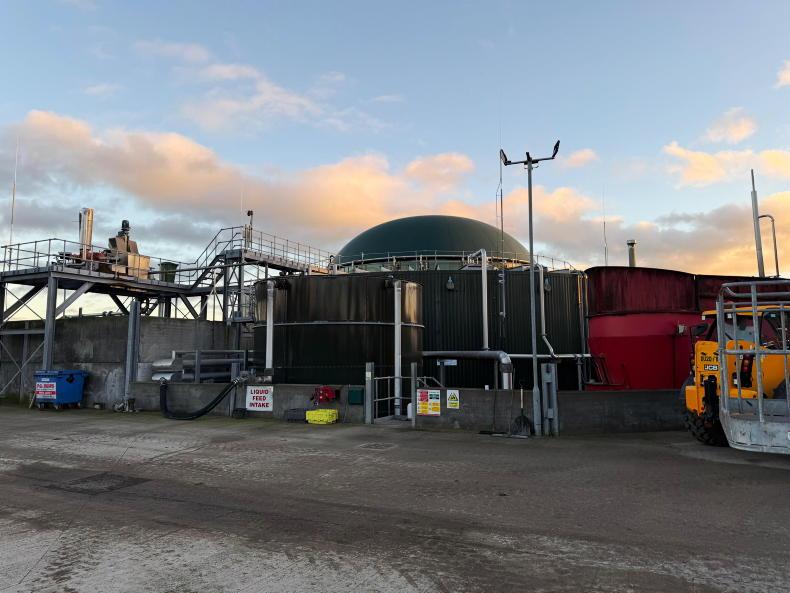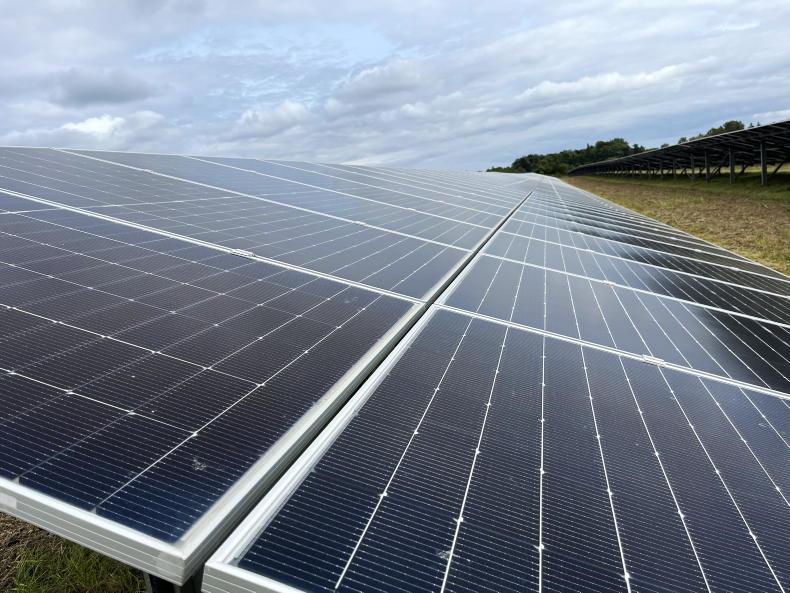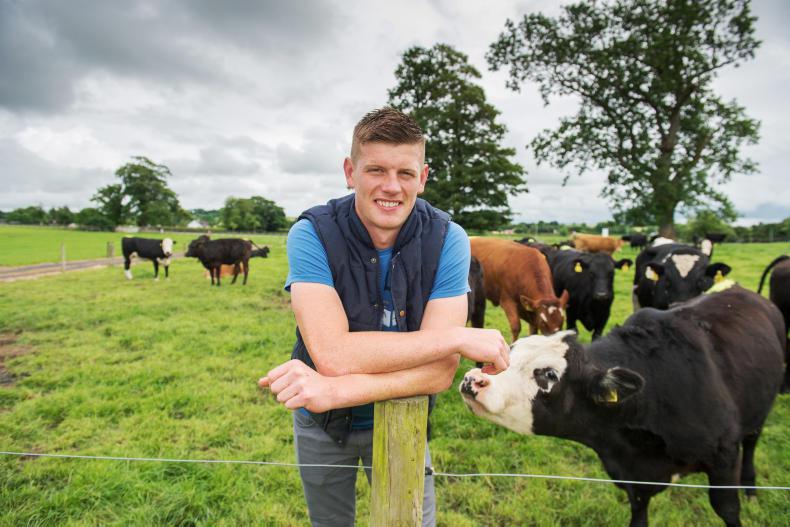From a broad perspective, 2024 saw a number of significant developments in the Anaerobic Digestion (AD) sector.
The National Biomethane Strategy, which was delivered in May, sets out 25 actions to be delivered in the coming years to enable the development of the sector.
A biomethane implementation group will support implementation of the strategy and monitor target delivery.
The Renewable Heat Obligation, which is one of the key policy enablers in the strategy, is expected in the new year.
A €40m Biomethane Capital Grant scheme was launched in August, with a maximum level of funding of €5m per project.

Dr Ciara Beausang, Teagasc Grange.
Several AD developers, including Nephin Renewable Gas, CycleØ and Greengate announced their plans to build multiple AD plants in locations across Ireland.
The combined capacity of these proposed plants would contribute 3 TWh towards the target of 5.7 TWh of biomethane by 2030.
A further 0.5 TWh of biomethane could be realised from eight individual plants that are currently proposed.
Grange AD
There was good progress made on the Teagasc Grange AD plant in 2024. Commissioning of the AD plant commenced at the beginning of the year.
This involved increasing the feedstock loading rate and fully testing all parts of the facility under operational conditions.

The Teagasc AD plant will begin producing biomethane next year.
During the commissioning phase, we check that the facility can handle the material it was designed to process, and check for unforeseen issues such as blockage points. It also enables optimisation to ensure the facility is running as effectively as possible. Before commissioning commenced, we held an open evening in late March to inform local residents about the plans for the AD plant.
We advertised the event in the local paper and we had a good turnout.
The questions that were raised included: the impact of the plant’s activities on traffic in the area, whether the AD process would lead to any local impacts including noise or smells, and whether the products from the AD process posed any risk to the environment.
The general feedback from attendees was that they welcomed the opportunity to come to the site to learn more about the project and engage with members of the Teagasc team.
Steps
The commissioning of the Grange AD plant included the following steps: Firstly, the digester was inoculated with cattle slurry as a source of microorganisms.
Secondly, the microbial community in the digester was allowed to develop as we gradually increased the temperature of the digester.
The microbial community is critical for the production of biogas.
Thirdly, we tested the facility with feedstock: grass silage and cattle slurry. Finally, we gradually increased the working volume of the digester.
Slurry gas yields
Once the temperature of the digester reached 20°C, we manually increased the temperature by 1°C a day to reach the working temperature of 38°C. This temperature supports the growth and activity of mesophilic microorganisms, which break down organic matter in the digester.

The next steps for the Grange AD plant will include increasing the proportion of grass silage co-digested with cattle slurry.
Currently, we are feeding the digester with six cubic metres (m3) of cattle slurry daily. In the early stages of commissioning, the biogas yield increased from 0.5 to 1 m3 of gas per m3 of slurry.
The biogas yield has now reached 4 m3 of gas per m3 of slurry. The content of methane in the biogas ranges from 55-64%.
The next steps for the Grange AD plant will include increasing the proportion of grass silage co-digested with cattle slurry until we reach the designed operational conditions of the plant.
This will enable the production of 70 m3 of gas per hour. Once the plant is fully operational, we will seek to optimise the plant based on economic and environmental performance.
In 2025, we expect delivery of an upgrader unit, which is being provided through Gas Networks Ireland’s innovation fund. This will enable the biogas to be upgraded to biomethane by removing carbon dioxide.
The biomethane will then be transported offsite by road to be injected into the gas grid. Currently, we are producing low levels of biogas by feeding the plant with slurry only.
The gas is flared intermittently to manage the level of gas in the headspace of the digester. Flaring converts methane into CO2 and water vapour, which are less harmful to the environment.
AD laboratory
In 2024, Teagasc also invested in developing a dedicated AD laboratory at Grange, which will be run by research technologist Dr Adriana Ferreira Maluf Braga.
Dr Braga is also responsible for managing the AD plant. The AD lab enables us to carry out analysis relating to feedstock, process control and stability and digestate.
This includes evaluating the total solids, volatile solids and the biomethane potential from different batches of feedstock. To monitor the stability of the AD process, we will measure pH and alkalinity.
We will also measure organic nitrogen and ammoniacal nitrogen. In the near future, we plan to extend our laboratory analysis to include the fibre composition of grass silage and individual volatile fatty acids, which are produced during the AD process.
Looking forward to 2025, several AD research projects will be commencing in the new year.
One such project is a collaboration with the University of Galway, which will look at improving biomethane yields from agricultural feedstocks.

The AD lab enables Teagasc to carry out analysis relating to feedstock, process control and stability and digestate.
The project consists of a number of tasks, including valorisation of grass as a feedstock following protein extraction and quantifying fugitive emissions from the AD process.
This project is funded though the Teagasc Walsh Scholars Programme.
Last year also saw the commencement of an Irish Research Council Fellowship funded project led by Dr Jizhong Meng. This project aims to develop a technology to recover nitrogen and phosphorous from the digestate produced in biogas plants (ie the ‘slurry’ that remains after the feedstock is digested) into commercial-level organic fertiliser.
In Teagasc, we look forward to building on the momentum we have seen in 2024 by ramping up production in 2025 and continuing to build our research and demonstration programme. We will continue to engage with key stakeholders as the industry develops and we welcome further opportunities to collaborate in this space.In short
The Teagasc AD plant has been commissioned and is now producing small amounts of biogas.From next year, the biogas will be further processed into biomethane.A new dedicated AD laboratory at Grange was launched last year.There is a range of new research projects underway in Teagasc grange relating to AD.
From a broad perspective, 2024 saw a number of significant developments in the Anaerobic Digestion (AD) sector.
The National Biomethane Strategy, which was delivered in May, sets out 25 actions to be delivered in the coming years to enable the development of the sector.
A biomethane implementation group will support implementation of the strategy and monitor target delivery.
The Renewable Heat Obligation, which is one of the key policy enablers in the strategy, is expected in the new year.
A €40m Biomethane Capital Grant scheme was launched in August, with a maximum level of funding of €5m per project.

Dr Ciara Beausang, Teagasc Grange.
Several AD developers, including Nephin Renewable Gas, CycleØ and Greengate announced their plans to build multiple AD plants in locations across Ireland.
The combined capacity of these proposed plants would contribute 3 TWh towards the target of 5.7 TWh of biomethane by 2030.
A further 0.5 TWh of biomethane could be realised from eight individual plants that are currently proposed.
Grange AD
There was good progress made on the Teagasc Grange AD plant in 2024. Commissioning of the AD plant commenced at the beginning of the year.
This involved increasing the feedstock loading rate and fully testing all parts of the facility under operational conditions.

The Teagasc AD plant will begin producing biomethane next year.
During the commissioning phase, we check that the facility can handle the material it was designed to process, and check for unforeseen issues such as blockage points. It also enables optimisation to ensure the facility is running as effectively as possible. Before commissioning commenced, we held an open evening in late March to inform local residents about the plans for the AD plant.
We advertised the event in the local paper and we had a good turnout.
The questions that were raised included: the impact of the plant’s activities on traffic in the area, whether the AD process would lead to any local impacts including noise or smells, and whether the products from the AD process posed any risk to the environment.
The general feedback from attendees was that they welcomed the opportunity to come to the site to learn more about the project and engage with members of the Teagasc team.
Steps
The commissioning of the Grange AD plant included the following steps: Firstly, the digester was inoculated with cattle slurry as a source of microorganisms.
Secondly, the microbial community in the digester was allowed to develop as we gradually increased the temperature of the digester.
The microbial community is critical for the production of biogas.
Thirdly, we tested the facility with feedstock: grass silage and cattle slurry. Finally, we gradually increased the working volume of the digester.
Slurry gas yields
Once the temperature of the digester reached 20°C, we manually increased the temperature by 1°C a day to reach the working temperature of 38°C. This temperature supports the growth and activity of mesophilic microorganisms, which break down organic matter in the digester.

The next steps for the Grange AD plant will include increasing the proportion of grass silage co-digested with cattle slurry.
Currently, we are feeding the digester with six cubic metres (m3) of cattle slurry daily. In the early stages of commissioning, the biogas yield increased from 0.5 to 1 m3 of gas per m3 of slurry.
The biogas yield has now reached 4 m3 of gas per m3 of slurry. The content of methane in the biogas ranges from 55-64%.
The next steps for the Grange AD plant will include increasing the proportion of grass silage co-digested with cattle slurry until we reach the designed operational conditions of the plant.
This will enable the production of 70 m3 of gas per hour. Once the plant is fully operational, we will seek to optimise the plant based on economic and environmental performance.
In 2025, we expect delivery of an upgrader unit, which is being provided through Gas Networks Ireland’s innovation fund. This will enable the biogas to be upgraded to biomethane by removing carbon dioxide.
The biomethane will then be transported offsite by road to be injected into the gas grid. Currently, we are producing low levels of biogas by feeding the plant with slurry only.
The gas is flared intermittently to manage the level of gas in the headspace of the digester. Flaring converts methane into CO2 and water vapour, which are less harmful to the environment.
AD laboratory
In 2024, Teagasc also invested in developing a dedicated AD laboratory at Grange, which will be run by research technologist Dr Adriana Ferreira Maluf Braga.
Dr Braga is also responsible for managing the AD plant. The AD lab enables us to carry out analysis relating to feedstock, process control and stability and digestate.
This includes evaluating the total solids, volatile solids and the biomethane potential from different batches of feedstock. To monitor the stability of the AD process, we will measure pH and alkalinity.
We will also measure organic nitrogen and ammoniacal nitrogen. In the near future, we plan to extend our laboratory analysis to include the fibre composition of grass silage and individual volatile fatty acids, which are produced during the AD process.
Looking forward to 2025, several AD research projects will be commencing in the new year.
One such project is a collaboration with the University of Galway, which will look at improving biomethane yields from agricultural feedstocks.

The AD lab enables Teagasc to carry out analysis relating to feedstock, process control and stability and digestate.
The project consists of a number of tasks, including valorisation of grass as a feedstock following protein extraction and quantifying fugitive emissions from the AD process.
This project is funded though the Teagasc Walsh Scholars Programme.
Last year also saw the commencement of an Irish Research Council Fellowship funded project led by Dr Jizhong Meng. This project aims to develop a technology to recover nitrogen and phosphorous from the digestate produced in biogas plants (ie the ‘slurry’ that remains after the feedstock is digested) into commercial-level organic fertiliser.
In Teagasc, we look forward to building on the momentum we have seen in 2024 by ramping up production in 2025 and continuing to build our research and demonstration programme. We will continue to engage with key stakeholders as the industry develops and we welcome further opportunities to collaborate in this space.In short
The Teagasc AD plant has been commissioned and is now producing small amounts of biogas.From next year, the biogas will be further processed into biomethane.A new dedicated AD laboratory at Grange was launched last year.There is a range of new research projects underway in Teagasc grange relating to AD. 













SHARING OPTIONS